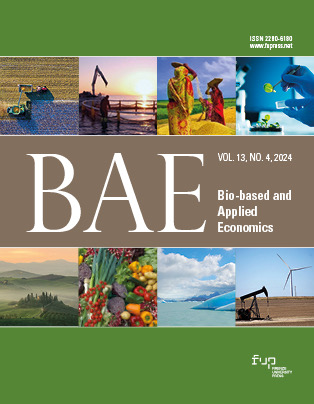Analyzing the impact of government subsidies on household welfare during economic shocks: A case study of Iran
Published 2024-09-02
Keywords
- poverty,
- vulnerability,
- Welfare,
- subsidies,
- food
- Demand system ...More
How to Cite
Copyright (c) 2023 Mohammad Dehghan, Seyed Nematollah Mousavi, Ebrahim Zare

This work is licensed under a Creative Commons Attribution 4.0 International License.
Abstract
The study evaluates the effectiveness of Iranian government subsidies for households by comparing the welfare impact of food price shocks with the subsidy payments they receive. This helps us assess the government’s efforts to reduce poverty in Iran. The household income and expenditure survey in 2020 was used to calculate compensated price elasticities using the Quadratic Almost Ideal Demand System (QAIDS). Results showed negative and less than 1 own-price elasticities for all food items, with a sensitivity to changes in income greater than one for demand of cereals, cooking oil, and fruits. Then, compensated variations (CV) welfare index was used to evaluate the effectiveness of government support payments in reducing household vulnerability due to food price increases. The results showed that the CV fluctuates between 8.05-80.46 $ under different scenarios. In other words, consumers are in a worse situation in terms of welfare and their expenditure increases. The vulnerability index of low-income households, after applying different food price scenarios, is in the range of 1.46-14.67%, which is reduced to 1.35-14.53% by implementing the cash-targeted subsidy policy. In other words, the effectiveness of the government’s subsidy policy of $19 per person could reduce the vulnerability of these households by only 0.14%.






